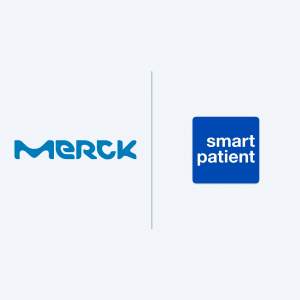17 Insights from Launching 80+ PSPs for More Than a Dozen Diseases
We’ve launched patient support programs for the likes of Merck and Pfizer to support patients living with a range of diseases, including multiple sclerosis, cancer, and psoriasis. Here is some of the most important knowledge we've gained along the way.

We have launched over 80 patient support programs over the years, helping some of the biggest pharma companies support patients living with diseases including multiple sclerosis, psoriasis, wet AMD, and cancer. Our experience has helped us gain valuable insights into issues such as distribution, global scalability, and patient engagement. Here are 17 quick-fire lessons you should know when launching any PSP.
17 Lessons Learned from Launching 80+ PSPs
Several of the lessons on this list have been the subject of other blog posts, so make sure to follow the links throughout the article to read more. If you want to dig deeper into any other topics mentioned, don’t hesitate to get in touch.
Real Patient-Centricity & Engagement
#1. Access = Acceptance
The very first step is vital for acceptance. Make it simple for users to gain access to the PSP and begin using some of the key features from the get-go. It is usually possible to demonstrate the value of the PSP to users before getting to the more tedious aspects, such as enrolment and registration.
#2: Make Onboarding EASY
When it comes to registration, a long, complicated, or confusing registration process will drive many users away. This is as true for patient support programs as it is any other app, website, or program, so it is worth putting effort into an onboarding process that is as simple and efficient as possible.
#3: Think ‘Users’ Not ‘Patients’
An issue many of pharma’s PSPs have faced is considering the userbase to be a homogeneous group of patients. Rather, users are a diverse group of individuals with a range of health and treatment needs, so for a PSP to be truly valuable pharma must A) understand users and B) offer a PSP with the capacity to meet these needs.
#4: Don’t Focus on One Drug or Disease
In order to meet the diverse needs alluded to in the last point, pharma must not focus PSPs on a single drug or disease. Comorbidities are common among people living with the majority of chronic diseases, so ensuring that a single PSP can handle a person’s entire treatment needs will make it far more valuable. This greatly increases retention by helping avoid the fatigue that comes with using multiple different programs.
#5: Pharma Organizes in Franchises, Patients Don’t
For pharma, the franchise is at the heart of the operation. For many patients, however, aspects such as the brand are of little consequence. Don’t treat PSPs as a way of ‘marketing’ your brand – just provide patients what they need.
#6: Find the Right Patient Voice
Our editorial team increased in-app clickthrough rates from 28% to 40% after rewriting pharma patient content. From the header to the bulk of the content, getting the voice and tonality right is hugely important. This extends to aspects that are something given little thought, such as the text used in calls-to-action and even the tonality of images used.
#7: Get Your Timing Right
Having effective content is only half of the story, you must also ensure that patients access it at the right time. In addition to experience and know-how, making use of the wealth of data we generate can help refine this process over time.
#8: Real Patient Engagement Stands the Test of Time
In our experience, engagement and retention go hand-in-hand. MyTherapy users typically engage with the app 6 times a day; those who use it regularly are also likely to be long-term users. The same holds true of the PSPs we have developed for our partners.
Understanding Regulatory Requirements & Local Markets
#9: Know When a PSP Becomes a Medical Device
Globally, regulations around software as a medical device have become far more stringent in recent years. Knowing exactly what does and does not constitute a medical device can allow you to provide the maximum benefit to users without crossing the line and giving yourself regulatory headaches.
#10: Think Globally; Deliver Locally
In order to get the maximum return from an investment in PSPs, pharma usually thinks globally. While this is the right approach, it is important to understand local market requirements and not assume one-size-fits-all.
#11: Understand Local Regulations
Our pharma PSPs are usually built with a global vision. To achieve global ambitions, though, it is imperative to understand local markets, not least when it comes to regulatory requirements. What is true in one market may not be true in another; finding out too late can lead to expensive and time-consuming problems.
#12: Listen to Local Markets from the Beginning
In our interview with Merck’s Helen Gray, the importance of engaging with local markets early was discussed. Beyond the regulatory side of things, understanding a market’s resources and requirements will help ensure they embrace and support the program when it is rolled out.
#13: Don’t Price Markets Out of Adoption
The final point regarding local markets is to adjust the price accordingly. If a market has an expensive program foisted upon them, guess what will be on the chopping block once budgeting season rolls around again.
How to Develop a PSP
#14: Don’t Build from Scratch
Paying some agency to build a PSP from scratch will likely lead to low adoption rates and poor product development and maintenance, as pharma has found out on many occasions. Rather, build on a platform that has already refined the fundamentals over hundreds of iterations.
#15: Time-to-Market CAN Be Short
By doing the above, PSPs can get from the conceptualization phase to rollout much quicker than you might expect. In fact, we believe it is possible to get a program to market in as little as 6 weeks.
#16: Template-Based Rollouts Mitigate the Risk of Delays
Practice makes perfect. When it comes to launching a PSP, there is no need to reinvent the wheel; a tried-and-tested template-based rollout is effective, efficient, and mitigates the risk of unexpected surprises that can cause costly delays.
#17: Treat PSPs as Products, Not Projects
Finally, the development of a PSP should not be treated as a ‘project’ that concludes upon launch. Rather, it is a product that requires regular updates and improvements over its lifespan. You can read more about our approach in an interview with our Head of Product Owners, Florian Müller.
Can you benefit from what we’ve learned?
Putting each of these lessons into practice when launching a PSP is a challenging but worthwhile proposition; doing so has helped us deliver dozens of programs to some of the biggest pharma companies on the planet.
If you could benefit from our expertise in digital patient support, don’t hesitate to reach out.





